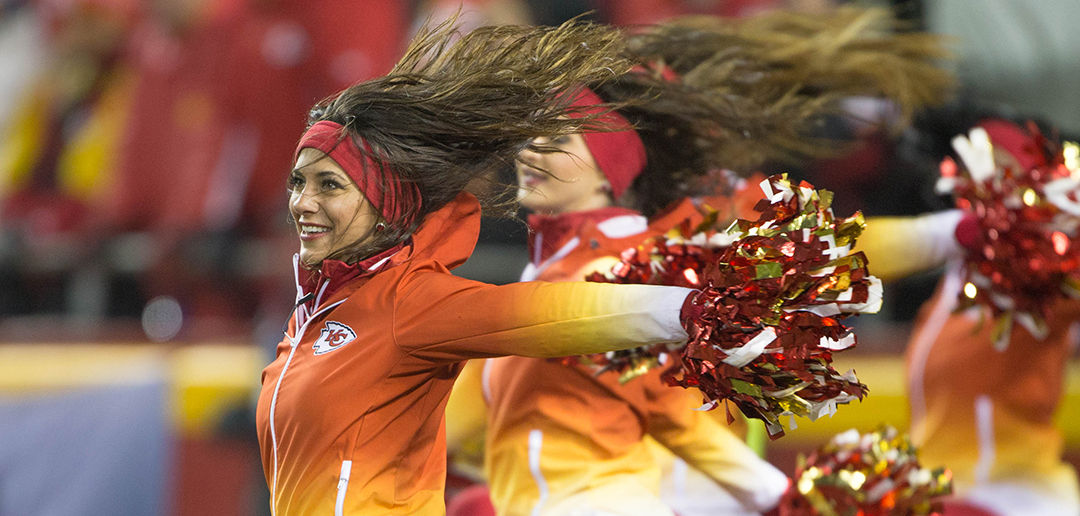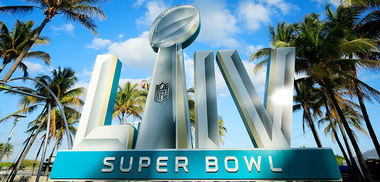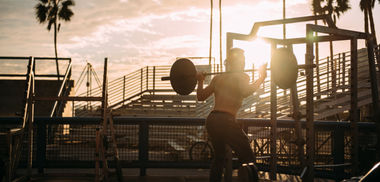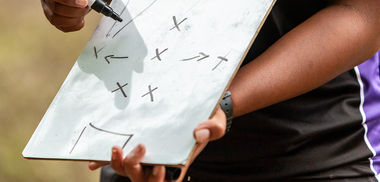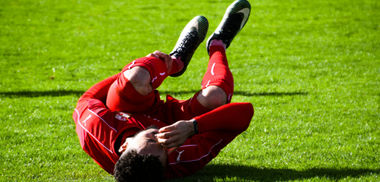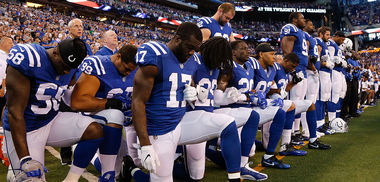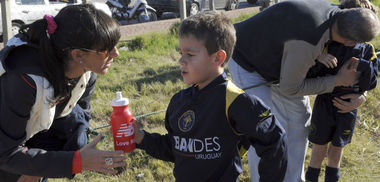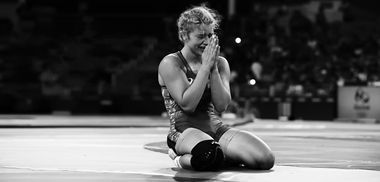Professional cheerleaders are in the news these days and we should be thankful. We’ve needed to talk about them for decades now, and it’s beyond time to start taking their existence on sidelines seriously.
A stream of recent allegations against several NFL teams’ treatment of their cheerleaders has suddenly caught the attention of media and those who follow the teams. A few examples include:
Later, the women were told they had to go out as “personal escorts” for an outing to a nightclub
Former New Orleans Saints cheerleader Bailey Davis was fired for posting a picture to her Instagram account that team officials thought was too provocative
Miami Dolphins cheerleader Kristan Ann Ware claims that her coaches subjected her to discrimination, retaliation, and a hostile work environment when they learned she was a virgin for religious reasons
The suits against the teams describe various indignities that the women faced as cheerleaders, including low pay, ridiculously long hours, and sexual harassment. These developments, while obviously deplorable and certainly deserving of attention on behalf of the women involved, force to the surface a range of smoldering questions that have been screaming for attention for decades:
How are we all complicit in their objectification by our silent approval of their performances? Why do we support their mostly naked existence at professional sporting events without objection?
Why in the age of #MeToo is there not more outrage from both men and women over their presence and performances at NFL/NBA games—not to mention boxing, wrestling, and hockey?
Our hearts should be broken for these women, but not simply because they were mistreated as cheerleaders. Rather, we should mourn because we created the modern category of professional cheerleader in the first place, then encouraged our daughters and sisters and in some cases wives to aspire to become one—an arrangement that by default does nothing but dehumanize and mentally objectify them from the start.
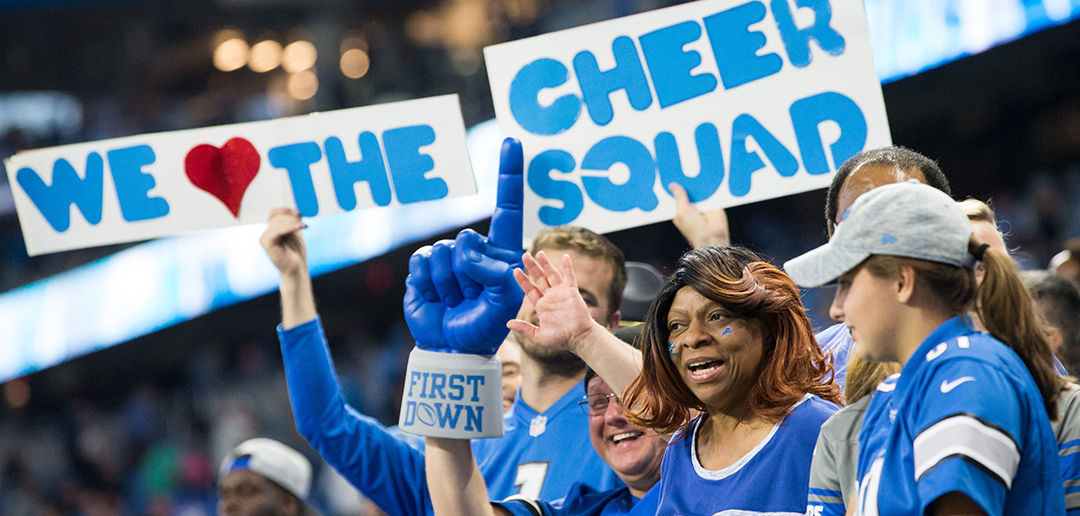
The term “cheerleader” itself needs clarifying given its evolution across decades.
Most junior high and high school—and for the most part, collegiate—cheerleading remains true to its lexical roots: A group of men and women who help lead cheers for the home team crowd, most popularly for football and basketball. Cheerleaders of this variety rely heavily on words and rhythmic stanzas to lead the crowd, with some acrobatic physicality thrown in during time outs and breaks in the game. They play a role alongside whatever team is playing and work to engage the crowd with the game.
Get our "Top Articles" sent to your inbox weekly.
In the 1980s, “competitive cheerleading” took cheering to another level by choreographing tumbling, dance, pyramid, and stunt moves into 3-4 minute presentations, practiced for the purpose of competing against other teams. Today, national competitions attract teams from all over the country to engage one another before a panel of judges. No longer “alongside,” these cheer teams have been validating competitive cheer as a sport for decades now, making physical demands on themselves equal to the most strenuous of athletic feats.
But a transition began long ago in the pro ranks, particularly in the NFL and NBA, where the women involved no longer actually lead the audience in any perceptible way but instead exist primarily to entertain the audience, employing clothing, dance moves, and a sassy vibe stereotypically found in seedy clubs or at raunchy parties.
The genesis of the current manifestation of professional “cheerleading” began in Texas almost 60 years ago. In Cheerleader: An American Icon, researcher and former collegiate cheerleader Natalie Adams argues that the gulf between scholastic cheerleading and professional cheerleading has been widening ever since the onset of the Dallas Cowgirls in 1960. Given the sexual revolution taking place throughout the country in that decade, it’s perhaps fitting that “America’s Team” would initiate serving up “America’s Fetish” on their sideline—public displays of crass sensuality.
Cowboys owner Tex Schramm took his vision for the Cowgirls more from Vegas showgirls—whose understood purpose was sensual entertainment—rather than from the more modestly dressed high school or collegiate version familiar to everyone. His image of a cheerleader, in keeping with a school boy fantasy, was someone who the average heterosexual male fan would consider the ultimate sexual partner, but who would nevertheless remain “completely unattainable.”
Otherwise known as visual and sexual objectification.
So kids in Texas—and all across the country—would grow up with a poster of Roger Staubach on their wall because they wanted to be like him athletically, while at the same time they’d have a poster of the Dallas Cowgirls on their wall because they wanted to be with them sexually. Exactly the way Schramm wanted it.
That’s what it’s been at the professional level from the start, and it’s only gotten worse as each decade becomes more ok with less clothing and more erotica in public spaces. Today’s lawsuits are simply the fruit of seeds that were planted in 1960, chickens coming home to roost in the feces of our rawest sexual impulses on public display in our stadiums and arenas.
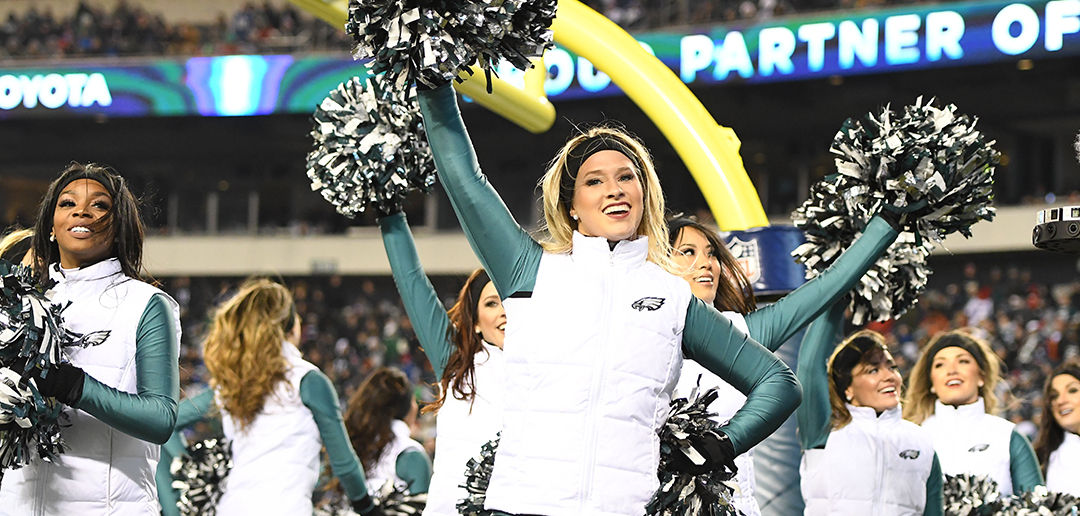
The Washington Post recently asked whether “sideline cheerleading featuring attractive women in provocative attire is integral to the enjoyment of football or a sexist relic of the past,” calling it “a matter of debate.”
It’s really not.
Posting the two options opposite one another is to suggest they are both viable, that we should justify the premise that nearly naked girls dancing seductively at games was at some point deemed necessary for the enjoyment of football spectators. This is silly. It was never necessary—it was always an excess that has simply gone unchallenged. Our experience of the game would not change in any substantial way—minus the erotic stimulation at time outs we’ve come to expect—if the dancers would suddenly disappear without warning.
Interestingly, the same Post article suggests that “the women who choose to do this work shouldn’t be treated like second-class citizens or…(be) sexually exploited.” But they’re already being sexually exploited every time they show up mostly naked to shimmy and twerk in front of a somewhat-titillated-somewhat-embarrassed crowd, and even being treated as a second-class citizen would be better than being entirely visually and sexually objectified, losing the dignity of citizenship altogether. That’s hard to hear, but except in rare cases, it’s happening during most NFL and NBA games we tune in to watch.
Daniel Snyder, owner of the Redskins since 1999 and currently under fire for accusations regarding his organization’s mistreatment of the women, had already been cited in a 2009 Washington City Paper column—tellingly titled “T&A in His DNA”—for “bringing the (cheering) craft closer to pole dancing with every season” after his first decade in charge of the team. Author Dave McKenna went on to stingingly assert that Snyder’s vision for the women was “less cheerleader-as-student-athlete than cheerleader-as-whore.”
Hard to hear, but this is what Schramm originally had in mind, and our current sideline erotica is simply the natural evolution of his initial vision 60 years ago.
Why do we accept this? Why are we silent when barely bikini’d women in high heels are used as skin in prime-time to sell their team by entertaining ogling men?
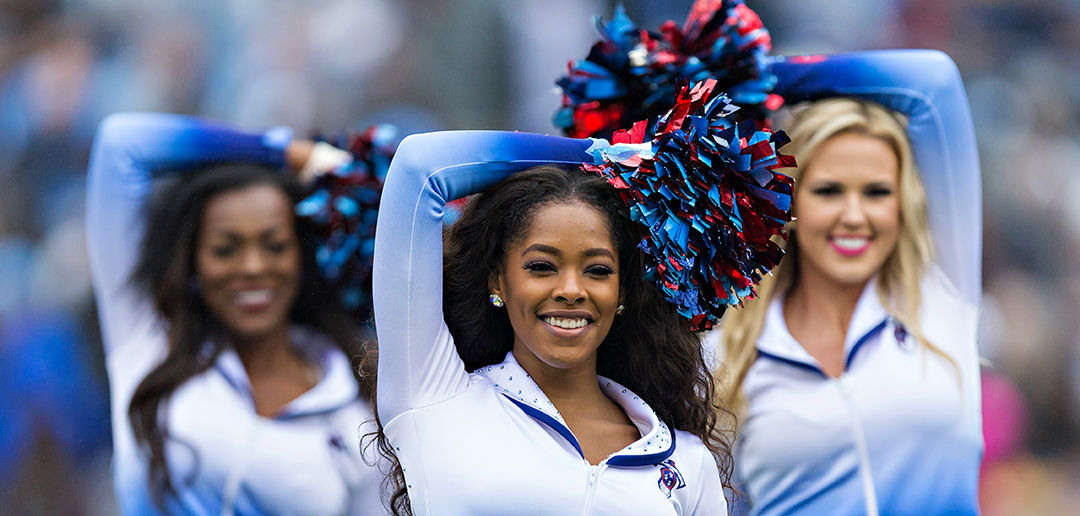
To be fair, no one is forced to become a professional cheerleader. Indeed, in most cities it is a highly sought after, super competitive process to get on a team. And the teams aren’t hiding anything—most are clear regarding their intentions to objectify the lucky “winners” right up front.
One professional cheerleading training site—billed as “the online community for aspiring, current, and alumni pro cheerleaders”—lists these five steps as the key to success: 1) Prepare your body, 2) prepare your image, 3) prepare your hair, 4) prepare your dance technique, 5) prepare your mind (i.e. know history and trivia about the team). Advice essentially suggesting that perfecting one’s presentation of superficial sensuality should be the primary goal.
But those who make the team quickly experience the baggage that comes with the honor. In a Cosmopolitan piece titled “Tales of an NFL Cheerleader,” one anonymous cheerleader revealed the core values of “cheering” at the pro level.
“I quickly found out that the hardest part of professional cheerleading isn’t learning the eight counts, high kicks, or whatever cheesy dance move we were being taught,” she said. “It was always looking perfect. Our contracts actually said, ‘Your appearance must be impeccable at all times.’”
Beyond controlling a particular look, teams want their women to portray a certain image to the public, not unlike the late Hugh Hefner’s requirements for his playmates who were treated in like fashion. “Besides looking good, I was expected to act like an angel. My contract forbade me from drinking, cussing, smoking, chewing gum, or identifying myself as a cheerleader in public,” all while “strangers got away with groping us.”
It makes sense to ask, in light of what everyone knows in advance, “Why would anyone sign up to be objectified and treated like a sexual avatar? To work extremely hard, get paid very little, and to lose personal dignity for the effort?” Her answer provides refreshingly honest insight.
“The real motive of cheering isn’t money anyway—most girls, myself included, become addicted to the pseudo-celebrity status that comes with those pom-poms,” she said. “I did get the 15 minutes of fame, and the contagious excitement of football season makes you feel like you’re a part of something huge. I was moved by the way little girls looked up to me, but when I started to think about what I was a role model for, I realized I had sacrificed my entire identity just to get into that uniform.” (italics added)
If we’re honest in return, we all get it. Wouldn’t most people attracted to the culture of professional sports be willing to pay an exorbitant price to be a part of “the team,” to experience the very real glitz and glamour of NFL/NBA life as an insider? The exhilaration of being on the sideline or court with a legitimate role to play in the spectacle itself?
The intoxication of spectacle tempts us to do any number of things in a particular moment we might regret later, an offer of glory whose glaring promises for the future overshadow whatever temporal price we’re required to pay now.
Deals with the devil always work that way.
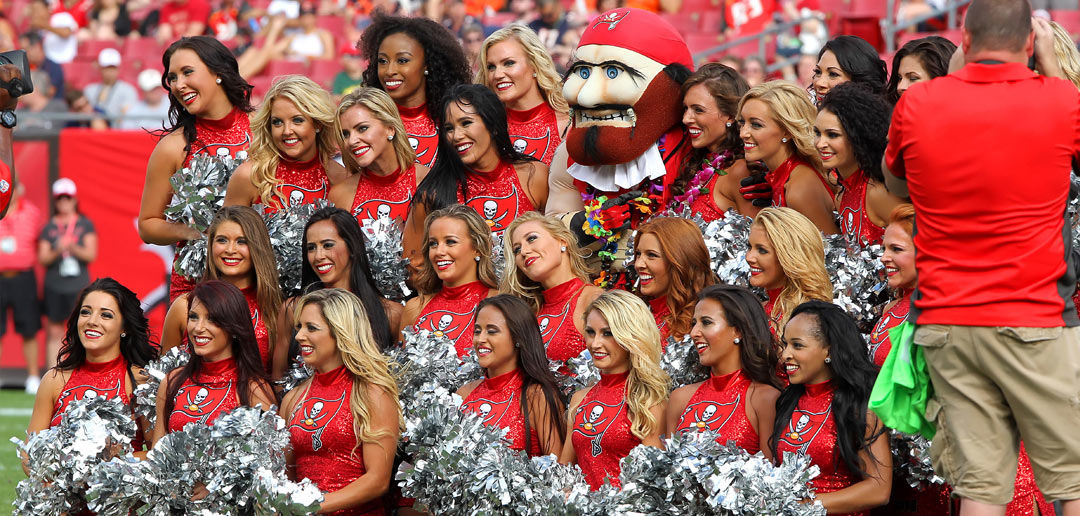
A couple of years ago I went to my first NBA game after a long attendance lay-off and was quickly bewildered by the environment being cultivated in the arena. At a certain point, it seemed we were at a communal stag party, complete with the flowing alcohol, sports playing in the background, and gorgeous girls already stripped to the minimum looking like they’d just popped out of a giant cake to surprise us all. If not for all the pesky wives and thousands of kids populating the arena with us, we’d have been free to re-live—at least visually—the raunchiest of frat party memories.
The women weren’t the only entertainment. On this particular night we had male breakdancers at the party, too, and the disparity between the expectations for the dance teams was noticeable.
There’s a reason why male breakdancers at NBA games—who are doing just as complicated and often more strenuous routines as the women—come fully clothed without large tracts of skin visible. Performers are coded according to traditional male desires—hence, men tend to be clothed while women tend toward nakedness.
Indeed, the women were dressed in clothing that you might find in a Victoria’s Secret store and wore various expressions of bikini-like outfits throughout the game, while the male break dancers came dressed in coordinated street clothes. There was nothing particularly sexual about the male dance moves, while the women twerked throughout the evening, a projection of heterosexual male fantasy lived out in the aisles and on the court throughout the night.
Interestingly, for all the struggles that professional front offices seem to have populating themselves with ethnic diversity, the average NFL/NBA dance team is amazingly technicolor: blondes, brunettes, redheads, brown skin, white skin, black skin, olive skin, etc. Why do teams find it difficult to value the importance of occasionally hiring a black general manager but can easily recognize the value of diverse, naked female representation on their sidelines and at mid-court?
Could it be that homogeneous front offices help maintain power, while diversified sensuality satisfies a broader spectrum of ticket-buying male?
Everyone hollers with indignation about the one—why not the other?
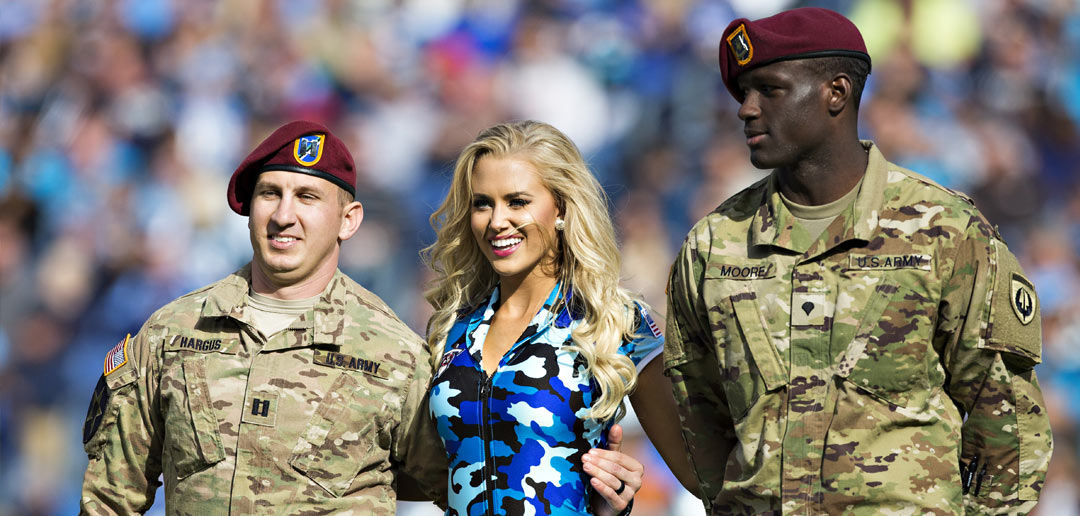
In spite of efforts to downplay and ignore the obvious, it’s a simple fact of human history that men are sexually aroused by female visual stimuli. In 1973, feminist social critic Laura Mulvey popularized the idea of the “male gaze” in film. That is, she highlighted how frequently an audience gets put into the perspective of a heterosexual man, where shots and scenes become opportunities for men to gaze at women through a sensual lens. This pattern ultimately denies female identity and relegates them to the status of objects to be admired and lusted after according to their physical appearance. The lens she described 45 years ago still offers insight into every media production we consume to this day.
Since men are usually the gatekeepers and editors of what we see and women dancing in little to no clothing has always been a source of male pleasure, we shouldn’t be surprised to find the “men-lustfully-watching-sensually-performing-women” as a staple of movies, TV shows, and music lyrics/videos. Even certain Biblical narratives expose the trend (see: Salome and King Herod).
While acknowledging this persistent reality, the objectification of women for the satisfaction of men was still always understood to be a guilty pleasure, best left in the shadows. That it made its way into professional, collegiate, and increasingly high school arenas is a fascinating study and raises a question worth asking: How did we come to tolerate the raw material of a stag party in the once family-friendly context of a professional sporting event?
At a time when our #Metoo meter is righteously sensitized to every perception of indiscretion directed toward women, why do women continue to conspire in their own objectification as professional cheerleaders? With millions of onlookers—many female—silent as they watch it happen game after game, week after week? Why are suddenly woke men, quick to condemn and rightfully deem inappropriate the behaviors of their recently accused male counterparts—unable or unwilling to call out this obvious objectification of women?

Why don’t I want my kids to see semi-naked dancing girls at professional games? Is it because I’m prudish and anti-beautiful woman? Of course not. A male chauvinist body shamer? Just the opposite.
Here’s two out of a long list of reasons.
First, we live in a pornographic culture and pornography—regardless of foolish suggestions otherwise—has devastating effects on the minds of both men and women. Whatever else seeing a mostly naked woman does inside a man, it also creates a desire to see her entirely naked. This isn’t a perversion inside of men or some sign of a crack in their makeup—it’s actually the way God made them. It’s why quasi-nakedness has always been best reserved for the bedroom, where folks can either put more clothes on before heading into the crowd or take them all the way off without being seen by masses of people.
It’s tragic that one of the effects of taking our son’s to a professional sporting event is that their desire to see naked women is intentionally stirred. We paid money and came to watch a sports competition, not a strip tease. If anything should be stirred it should be their desire to go home and work on their game—not look at porn.
Nor do I want my daughter comparing herself to the real-life-but-still-airbrushed-look of perfection that the dancers portray. I don’t want her to embrace the “sex sells” vibe given off by the cheerleaders. I want her stimulated to go home and think about how to be an executive in the front office, not to begin binge eating.
Second, the women who perform as dancers and cheerleaders are being entirely objectified by their mostly-naked, provocatively moving presence at these games. They may not want to admit it. Nobody wants to say it out loud. But it’s true: the women’s primary purpose is to provide visual stimulation. Like other concessions further up the concourse, they are provided to be consumed. While a soft pretzel and Coke provide pleasure to the taste buds and stomach, professional cheerleaders exist to be enjoyed by the eyes and the erotic senses. Don’t even try to argue otherwise. This is obvious to anyone willing to honestly assess what’s going on.
What we implicitly communicate to our sons as we gawk lustily at barely dressed dancers at our sporting events is that we’re entitled to consume women. “It’s ok boys. Go ahead and drink them all in. Compare them against each other. See her sexy smile? Girls like being thought of and treated this way.” Our acceptance of them at the games only highlights our ongoing cultural hypocrisy and contradictions when it comes to gender, sexuality, and what we should expect of men in relationship to both. Just because you dress and dance like a stripper doesn’t mean you deserve to be treated like one, but it certainly increases the chances that you will be, and our silent participation encourages our sons to think they’re entitled to operate toward women with this mindset.
What we communicate to our daughters as we sit silently consuming is that they should like being related to and desired in this fashion—that it’s something to aspire to. It’s not. We have to communicate to our daughters that getting sexual attention from a crowd of people for dancing half naked in front of them is a cheap way to get attention. Just because it looks glamorous and people paid huge money to watch it doesn’t mean it’s a worthy use of their femininity. Encourage them to use their God-given beauty and the social capital that comes with it to make a difference in the world, not to give it away to a bunch of men as part of time-out entertainment at a game.
Of course, the sixteen-year-old, sinful boy inside me loves all this, just the way Mr. Schramm envisioned. But the Dad who has a wife and a daughter and three boys grieves for these women, for my kids, and for all of us watching, even as I empathize with the women’s desire to be a part of the spectacle and show of professional sports. It’s just not worth obtaining entrance this way.
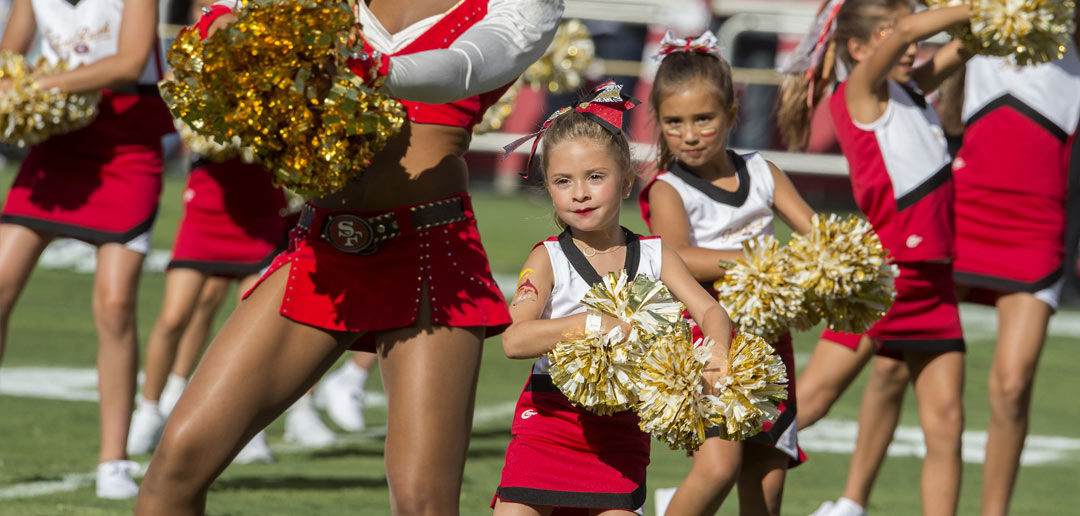
To owners who continue to endorse and expand Schramm’s vision: Stop being complicit in the objectification of women and stimulating pornographic allure in men. Semi-naked women dancing will always work as an easy form of entertainment, but it’s not healthy for anyone involved. Have them put more clothes on. Have them tone down the twerking. Get rid of the provocative postures and expressions. Dance? Absolutely. But we need to reform what this has become, for both the women and those who are watching them.
To consumers who watch the “cheering” at games: Stop normalizing and aiding in the justification of the sexual objectification of these women. Yes, they’re choosing to do it, but only because we watch, and only because we lustily affirm what they offer. Let’s stop. Turn away during routines. Encourage conversation. Look at your phone. But stop conspiring against these women’s best interests by going along with the fantasy charade. She’s someone’s daughter and someone else’s wife. “But I tell you that anyone who looks at a woman lustfully has already committed adultery with her in his heart.” Let’s stop with the in-game adultery and get back to watching the competition without the sensual distraction.
To women who aspire to be a professional cheerleader: The God-given feminine power of sensuality is a wonderful stewardship you get to manage. Like others who face the responsibility of power, how that power gets used has consequences—both for the user and those affected by it. While anyone can understand the allure of pursuing opportunities that arise with using God-given beauty and sensual attractiveness for celebrity, going down that path always comes with a cost.
The cost of being reduced to skin and sexuality. The cost of losing your identity and becoming a sensual avatar in the minds of watchers. The cost of causing others to stumble, either out of comparison or lust. The cost of being objectified to the level of others’ fantasy, which may satisfy in the short run but always runs the tank dry in the end. All of these realities demean both you and the gifts God has given you.
Dance is certainly a legitimate expression and use of your body, but professional cheerleading comes with sexualized baggage that makes it worth reconsidering. Don’t fall for the lie that it’s better to get cheap sexual attention than to get no attention at all. God has something better for you and the physical blessings you steward—trust him to reveal His will for your body and mind and don’t settle for the world’s bawdy substitute.
